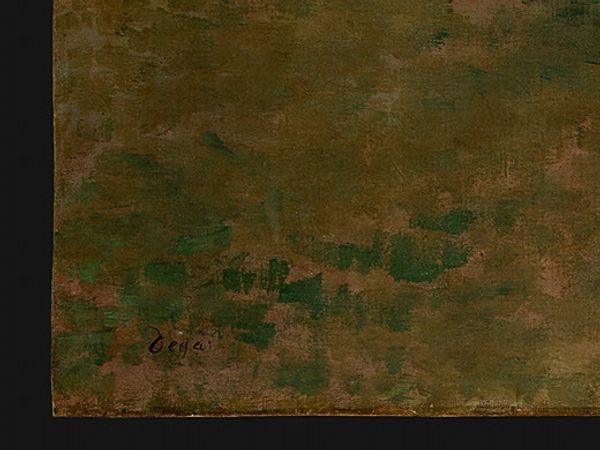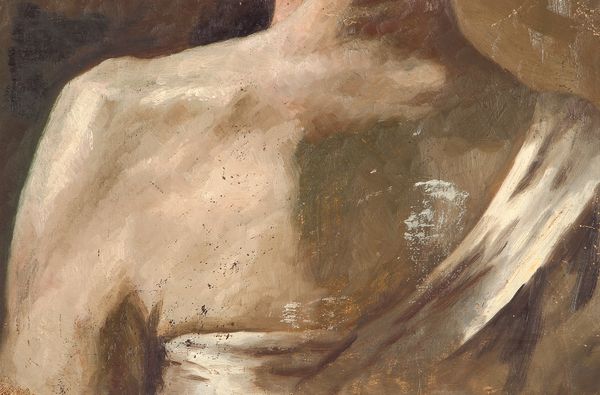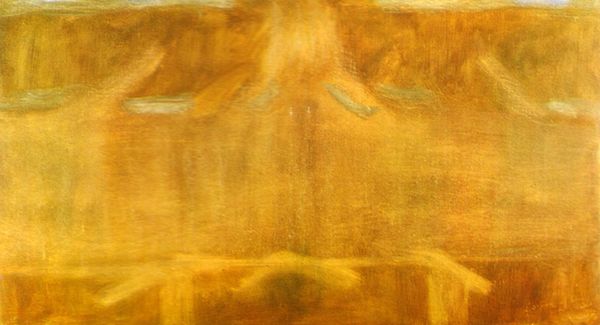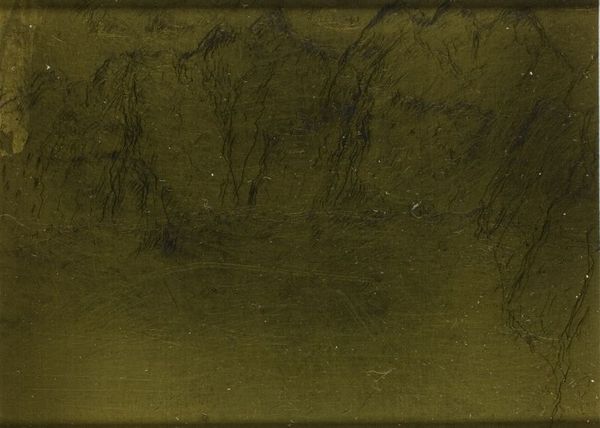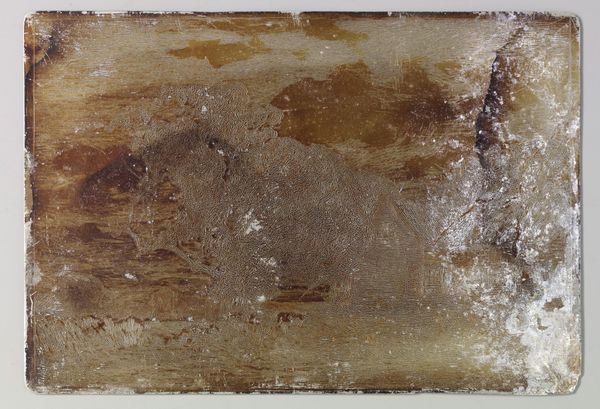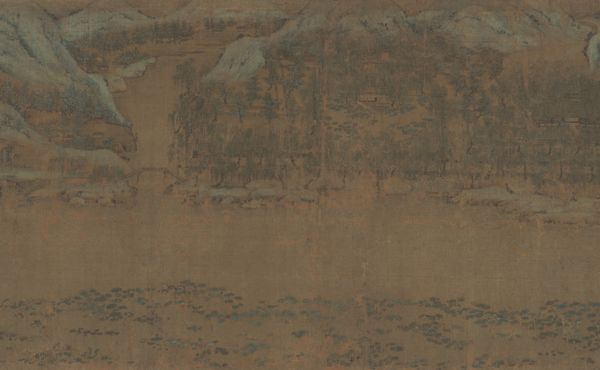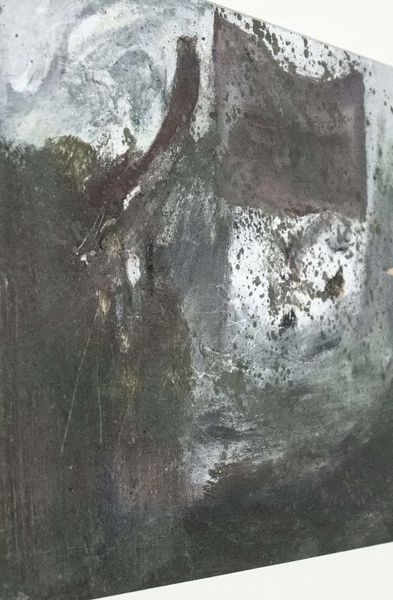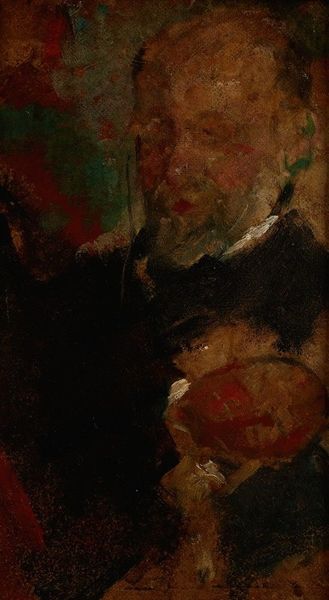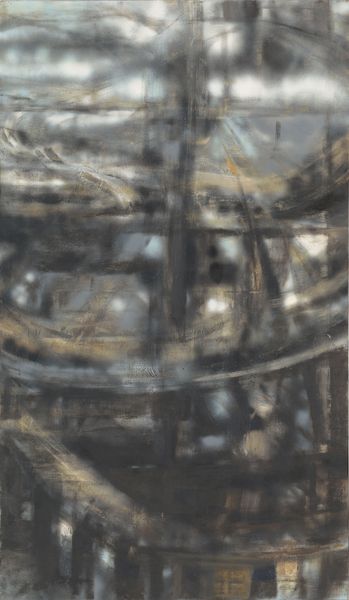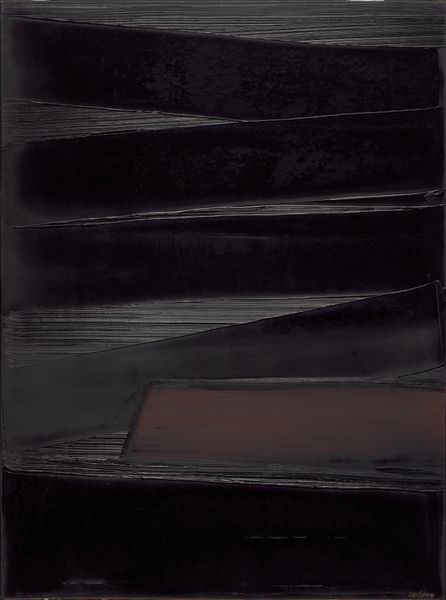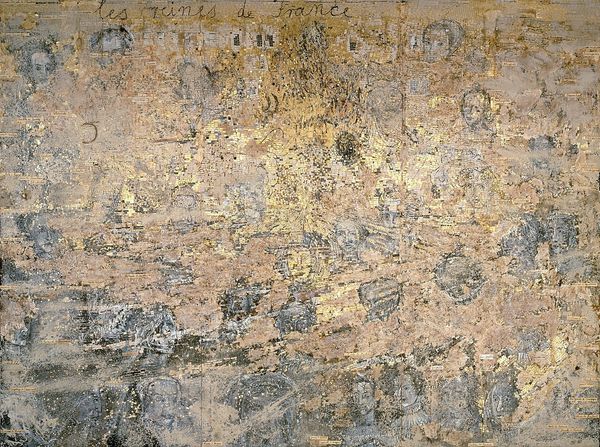
Copyright: Public domain
Curator: We are looking at a fragment of Edgar Degas' “Alexander and Bucephalus,” created in 1861 using oil paint. Editor: It's certainly a dramatic piece, even in this cropped view. The ochre and brown palette create a sense of unease. The texture feels almost sculptural with what appears to be impasto. Curator: Precisely, that surface manipulation is key. Observe how Degas uses impasto to construct depth within the pictorial space, manipulating our sense of proximity and distance through contrasting planar application. The visible brushstrokes, despite the muted color scheme, contribute to a charged dynamic. Editor: It is almost unsettling to think this scene depicts a famed historic event. Without knowing the painting’s history, I would never place this composition within history painting’s usual glorification of war. Are there historical reasons that can tell us more about this piece? Curator: Indeed. Art history positions this work as a study. Degas was working within the academic art tradition but experimenting with form. Think about how the composition rejects classical structure, for instance. Where we would expect heroic clarity, we see ambiguity and painterly process. The color is non-descriptive, the subjects’ appearance non-heroic; that disrupts typical history painting narratives, even though this is, formally speaking, academic-art. Editor: Knowing that, I am curious how it was received at the time. It seems like Degas pushes against those institutional expectations, offering the public new perspectives on what "heroic" could mean at the time. Curator: His approach aligns with broader shifts occurring within artistic circles at that time as artists turned toward modern themes rather than just the classics. These evolving conceptions affected patronage. History painting lost favor as society prioritized other artistic goals. The move reflects modernization’s broader rejection of tradition for more contemporary ideals, ones which this canvas presages and promotes. Editor: So even within this fragment, we see echoes of social transformations, the turn to modern life, not only within the art world but also reflecting the broader population's concerns. Thank you. Curator: It is these intersections, these dialogues, that remind us of the enduring presence—the persistent influence—of even fragmented artifacts of culture.
Comments
No comments
Be the first to comment and join the conversation on the ultimate creative platform.
